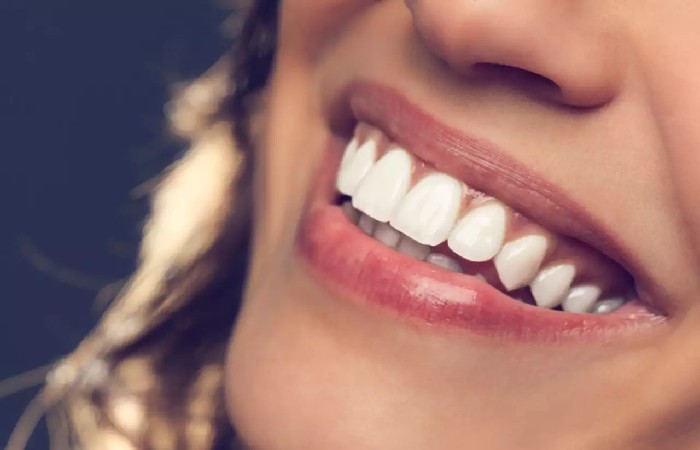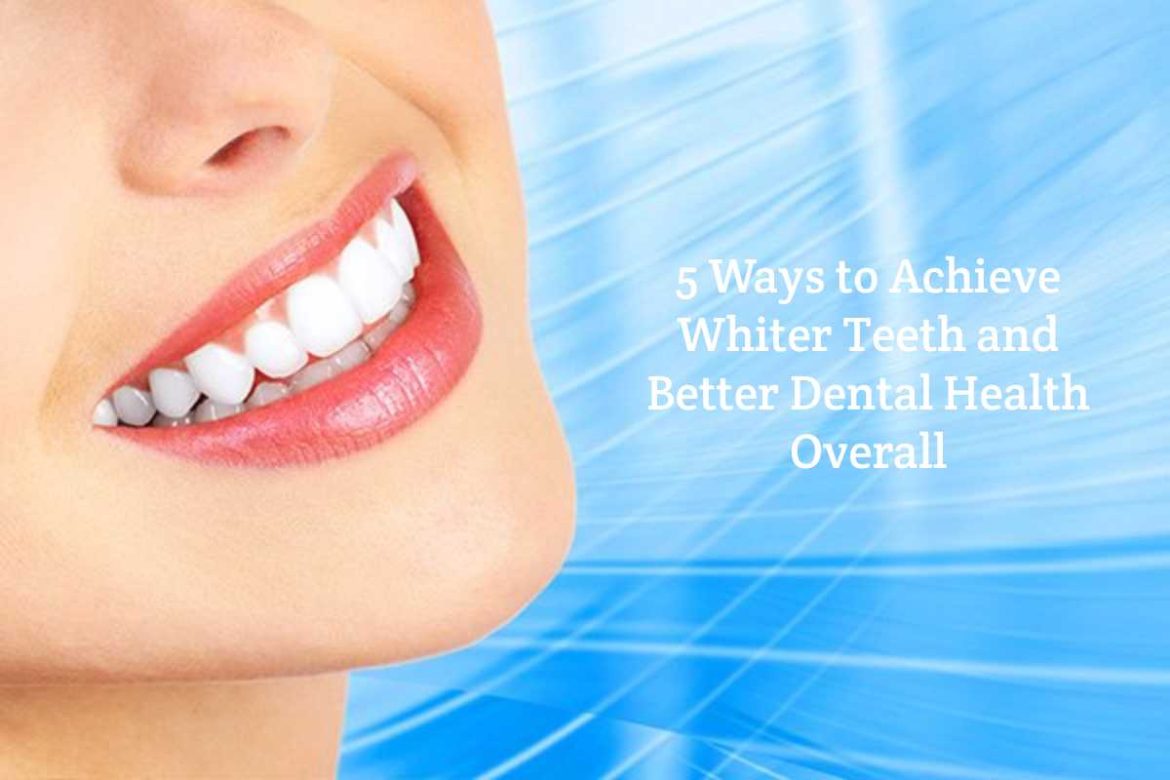Achieve Whiter Teeth and Better Dental Health – Straighter teeth and a whiter smile are two things that virtually everyone wants when it comes to dental health. Although many more things go into achieving good dental health, aiming for whiter teeth is a great place to start. Here are five things that you can do to achieve a whiter smile.
#1: Practice Good Oral Hygiene
The best place to start when you’re trying to whiten your teeth is with your current dental habits. Are you brushing and flossing your teeth regularly? A consistent routine can help improve the look (and health) of your teeth and mouth. The American Dental Association recommends brushing twice daily and flossing once a day (at any time, before or after brushing).
You can also choose to use whitening toothpastes or even baking soda, as it’s abrasive enough to remove surface stains. Mouthwash isn’t always necessary, according to the ADA, but therapeutic mouthwashes can help kill bacteria that causes oral issues and well as help whiten your teeth.
Indeed, oral health affects overall health across all age groups. Consistently following a regular dental routine is crucial for maintaining not only a bright smile but also your overall health. Poor oral hygiene can lead to issues like gum disease, tooth decay, and even systemic conditions such as heart disease and diabetes.
#2: Be Aware of Your Diet and Habits
Certain drinks like coffee, tea, and wine (red) can leave stains on the teeth, making it much harder for them to stay white. On the other hand, certain foods (such as apples, carrots, celery, and dairy products) can help clean your teeth, remove acid, and strengthen the enamel on your teeth. So increase the amount of crunchy fruits and vegetables you eat and decrease the amount of coffee, tea, and wine you drink— or just rinse your mouth with water after drinking these.
Also, smoking can cause stains on the teeth. Smoking tobacco can also cause a number of other oral health issues, such as gum recession, lesions, periodontal disease, and even oral cancer— not to mention the fact that smoking is detrimental to lung and heart health. For these reasons, it’s best to quit smoking altogether.
#3: Go to the Dentist Regularly
Everyone should try to go to the dentist at least once a year, but twice a year (every six months) is ideal. Your dentist can give you a professional cleaning that will whiten your teeth, and he or she will also check for any oral diseases, toothaches, and give you tips on how to keep up with your dental health in between visits.
You’ll also be able to consult with your dentist about any professional whitening treatments you’d want to try if your brushing and flossing routine isn’t producing the results you want. Just keep in mind that professional whitening treatments can get very expensive, and most dental insurance plans don’t cover whitening treatments.
#4: Use OTC Whitening Products

Because professional whitening is expensive, many people try OTC (over the counter) whitening products first. There are many whitening toothpaste and mouthwash brands on the market, so start here first. If you’re not getting the results you want from these, there are other products that can help whiten your teeth as well, such as:
- Gels/pastes
- Pens
- Strips
There are also even full kits that include something similar to a mouth guard that you can place in your mouth as a part of your at-home whitening treatment.
#5: Consider False Teeth
Again, good oral hygiene may not give you the results you desire— even if you quit smoking and have increased your intake of crunchy fruits and vegetables. Also, it can be hard to cut out coffee, tea, and wine— especially since they all provide some health benefits. In this case, you could consider false teeth— which aren’t just limited to dentures. Examples of false teeth and other teeth-correcting procedures include:
- Composite bonding
- Crowns
- Inlays and onlays
- Porcelain veneers
- Snap-on veneers
White teeth covers are a great option when you need your teeth to look whiter quickly and inexpensively— specifically the snap-on veneers option. Porcelain veneers are permanent and require you to visit an orthodontist so that he or she can shave down your teeth to permanently attach the false teeth to them. The alternative to porcelain veneers (snap-ons)don’t require a visit to the dentist’s office and are a much more affordable option.
Even when using teeth covers, whitening products, or getting a professional whitening, it’s still important to practice good oral hygiene. A good dental routine (paired with a healthy diet and abstaining from smoking) is the foundation needed for both healthy and white teeth, whether going about whitening teeth naturally or not. Good oral health also ensures that you have good overall health.


